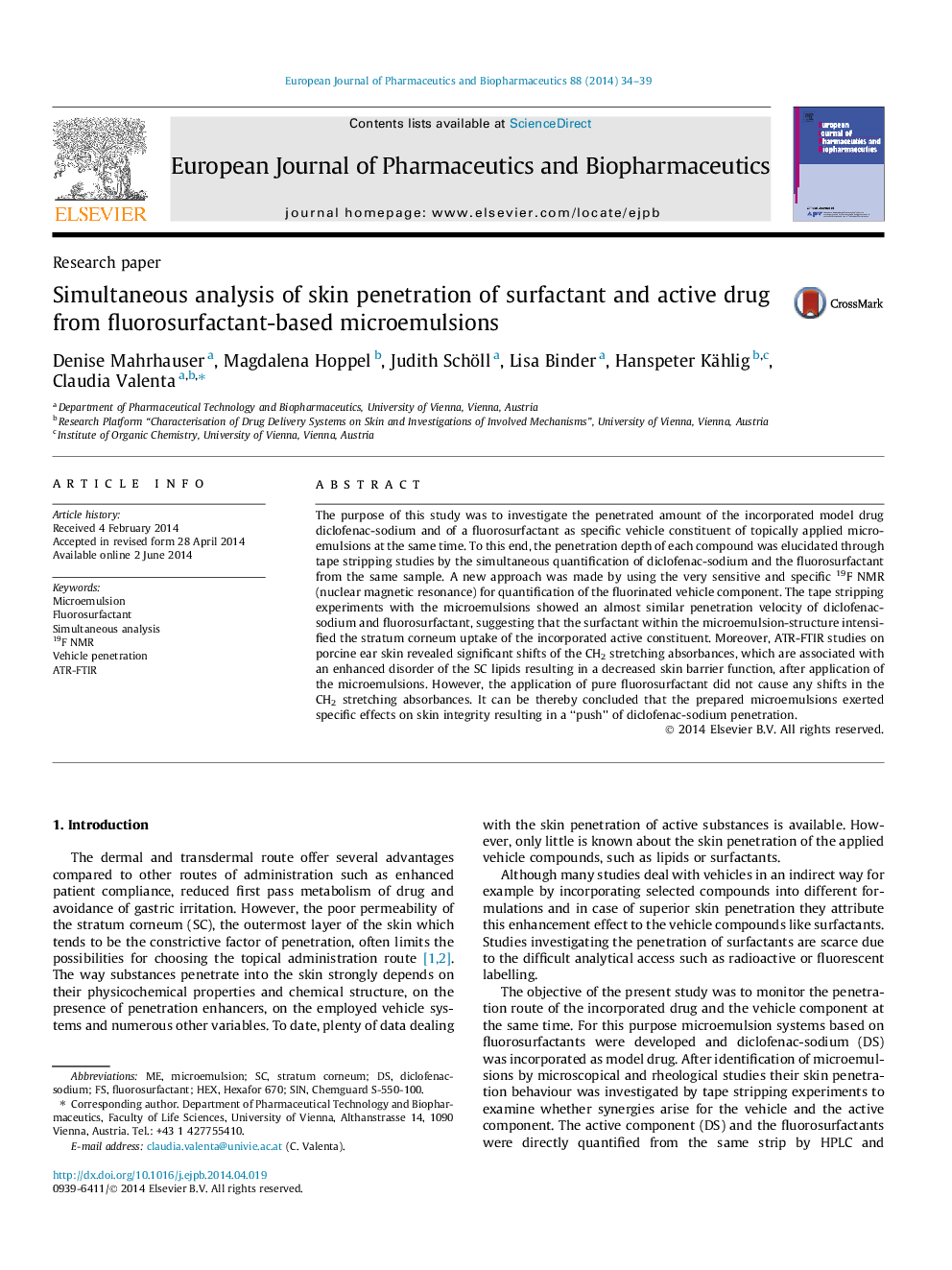| Article ID | Journal | Published Year | Pages | File Type |
|---|---|---|---|---|
| 2083581 | European Journal of Pharmaceutics and Biopharmaceutics | 2014 | 6 Pages |
•Sensitive and specific 19F NMR for quantification of the fluorinated vehicle.•Simultaneous analysis of the vehicle component and active drug.•To set their penetration behaviour in relation, their relative slopes were calculated.•Microemulsion systems exerted a ‘push’ on drug skin penetration.
The purpose of this study was to investigate the penetrated amount of the incorporated model drug diclofenac-sodium and of a fluorosurfactant as specific vehicle constituent of topically applied microemulsions at the same time. To this end, the penetration depth of each compound was elucidated through tape stripping studies by the simultaneous quantification of diclofenac-sodium and the fluorosurfactant from the same sample. A new approach was made by using the very sensitive and specific 19F NMR (nuclear magnetic resonance) for quantification of the fluorinated vehicle component. The tape stripping experiments with the microemulsions showed an almost similar penetration velocity of diclofenac-sodium and fluorosurfactant, suggesting that the surfactant within the microemulsion-structure intensified the stratum corneum uptake of the incorporated active constituent. Moreover, ATR-FTIR studies on porcine ear skin revealed significant shifts of the CH2 stretching absorbances, which are associated with an enhanced disorder of the SC lipids resulting in a decreased skin barrier function, after application of the microemulsions. However, the application of pure fluorosurfactant did not cause any shifts in the CH2 stretching absorbances. It can be thereby concluded that the prepared microemulsions exerted specific effects on skin integrity resulting in a “push” of diclofenac-sodium penetration.
Graphical abstractFigure optionsDownload full-size imageDownload high-quality image (104 K)Download as PowerPoint slide
